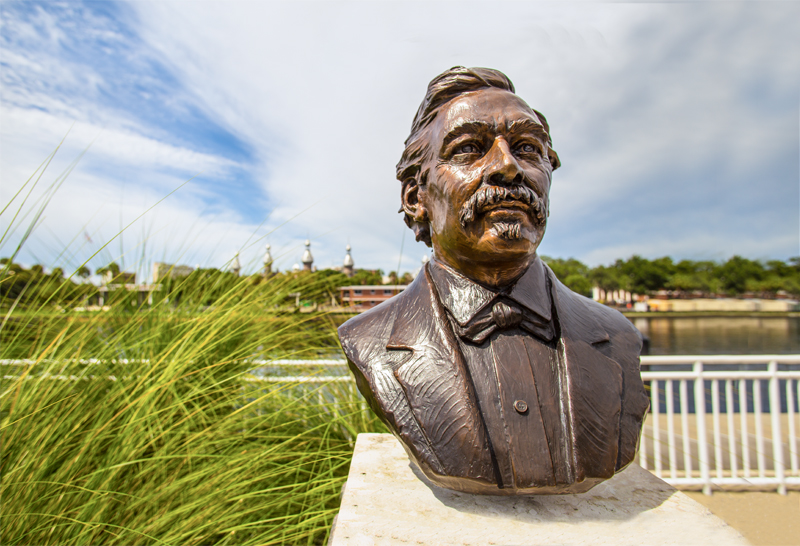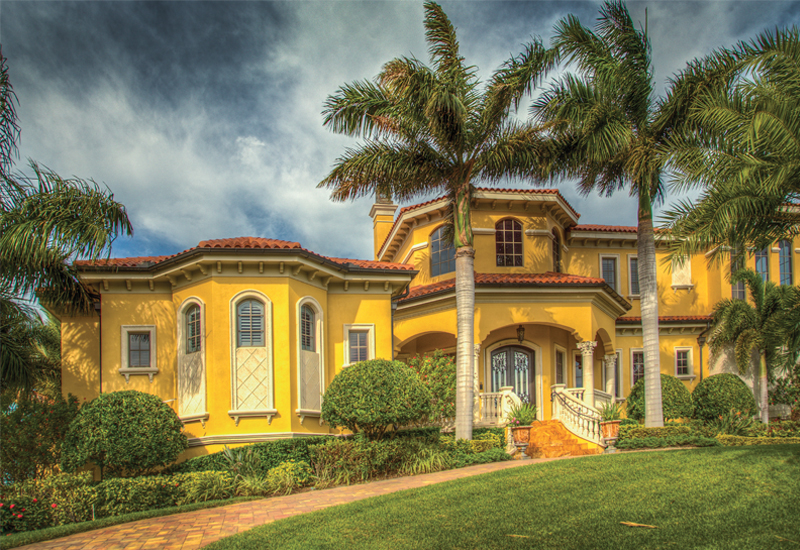In this ongoing series, we’ll examine the lives of several Tampa icons that have helped shape the city into what it is today. In this issue, we’re highlighting the life of Henry B. Plant, the man who brought the railroad to Tampa and is responsible for this city’s growth in its earliest stages.
By the time he was seven, Henry B. Plant had already lost his father and little sister to Typhus and seen them lowered into a Connecticut cemetery. In the decades before the Civil War and the ignition of the Industrial Revolution, Plant was given a choice: take his grandmother up on Yale seminary or find his own way.
He chose a steamboat. He worked as the captain’s boy on The New York, which carried passengers and mail between New Haven, Conn., and New York City. He then came ashore, after meeting and marrying his wife, Ellen Blackstone, in 1843. He joined Adams Express Co. and handled their express package business.
Plant’s fortunes grew when he became chief of Adams Express’ New York office. When the Civil War became imminent, Adams Express feared for the disruption of Southern rail and depots, where it did significant business. Plant and other southern investors bought the properties for $500,000 and renamed it the Southern Express Co. before Confederate President Jefferson Davis made the company the agent for collecting the Confederate State of America’s tariffs.
After the Civil War, Plant returned to the South’s decimated railroads. He pulled from his stockpile of cash to buy Atlantic & Gulf Railroad and several other lines at foreclosure. He put together 2,100 miles of track, steamships and a number of southern hotels. He and other rich industrialists, including Henry Flagler, put together the Plant Investment Company and created steamship and rail service to North Florida orange growers and other farmers.
Plant knew about a little village named Tampa on Florida’s west coast with an accessible water harbor. Tampa had several hundred residents in 1885 when Plant decided to make it the southern terminus to his railroad system. To house his passengers and other wealthy winter tourists, Plant invested $3 million and broke ground on 150 acres to build the fabulous Tampa Bay Hotel, which opened in 1891. In 1898, this hotel gained international fame as the military headquarters during the Spanish American War. Another large, Victorian-style hotel established by Plant during the 1890s was the Belleview Biltmore in Clearwater.
Plant built an empire that transformed landscapes, altered waterways and turned small towns into lively cities. Modern Tampa, connected to the rest of the world through shipping and now air travel, is his gift to the west coast of Florida. His energy, which kept him productive into his 80th year, made Tampa Bay an important link to Latin America and the rest of the world.
Henry Hails Us to Hyde Park
 Tampa’s historical Hyde Park neighborhood dates back to the 1880s when railroad financier Henry B. Plant built the first bridge across the Hillsborough River at Lafayette Street, which is now known as John F. Kennedy Boulevard.
Tampa’s historical Hyde Park neighborhood dates back to the 1880s when railroad financier Henry B. Plant built the first bridge across the Hillsborough River at Lafayette Street, which is now known as John F. Kennedy Boulevard.
The first house in the neighborhood was built by James Watrous in 1882 at 1307 W. Morrison Avenue, and growth occurred rapidly as the street car line was put in on Swann Avenue and Rome Avenue. This is the reason for the wideness of those two streets, while most in the neighborhood are much narrower.
The section that is now Hyde Park was uncharted wilderness with cattle paths winding through woods and palmettos. Many of the homes built after 1882 still stand today and included Victorian, Colonial and Georgian styles. This includes the Thomas Carson Taliaferro House, a two-story Georgian Revival at 305 Hyde Park Avenue.
The area where Old Hyde Park Village is today was originally called Cork Avenue and Dakota Avenue. However, the only portion left of Cork Avenue today is called Snow Avenue, which is in the heart of Hyde Park’s shopping district.



